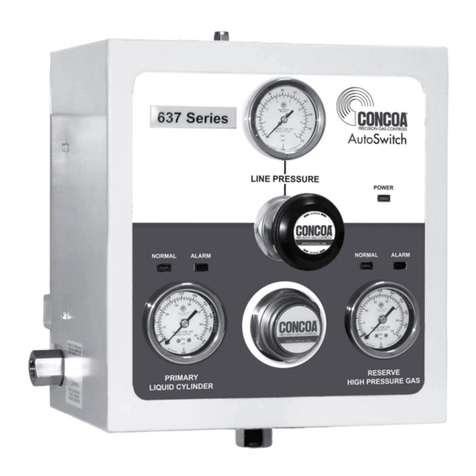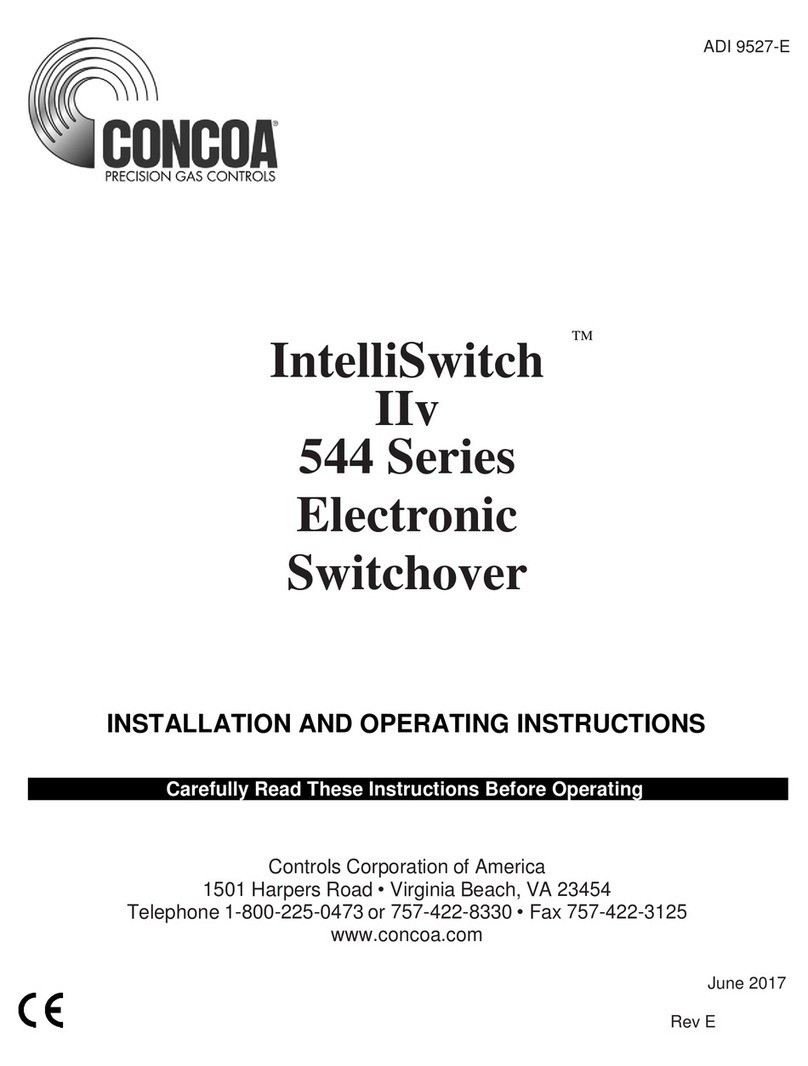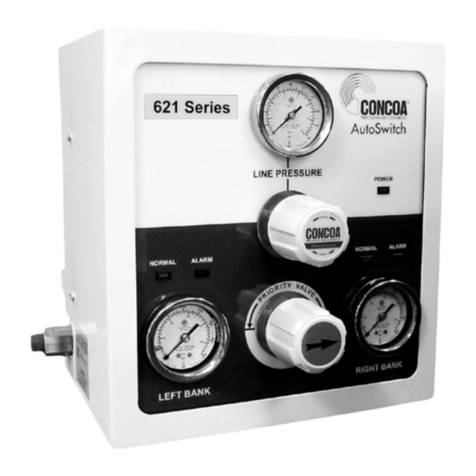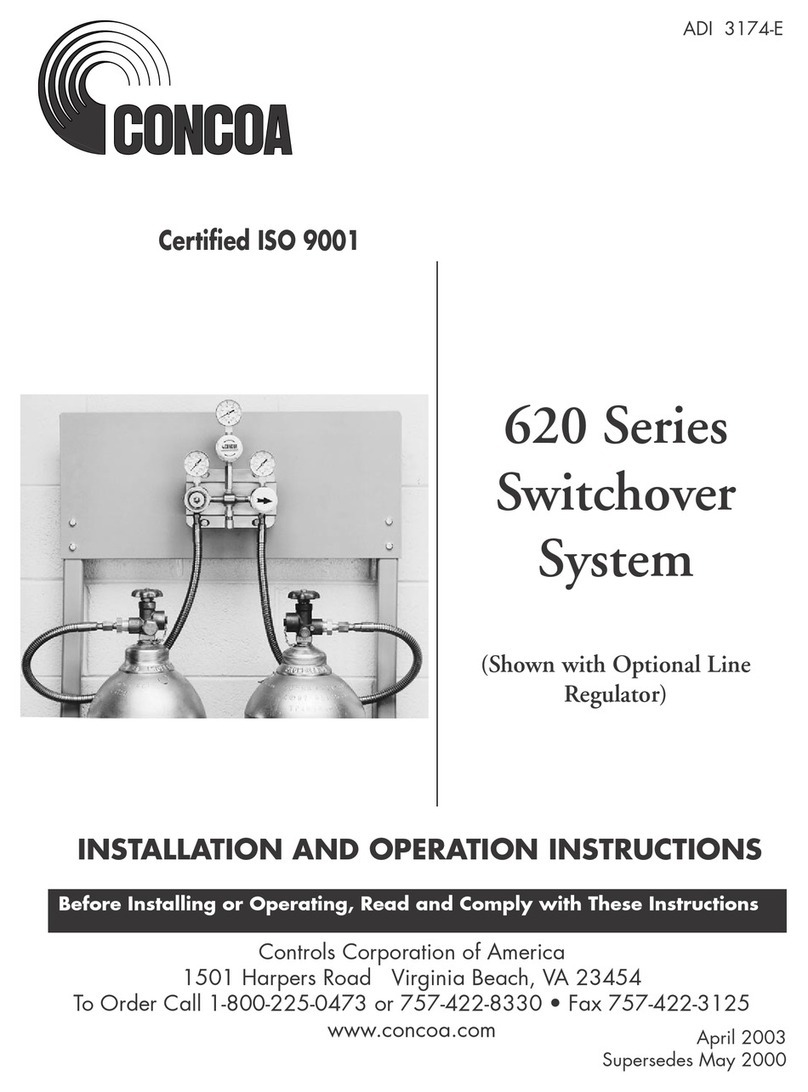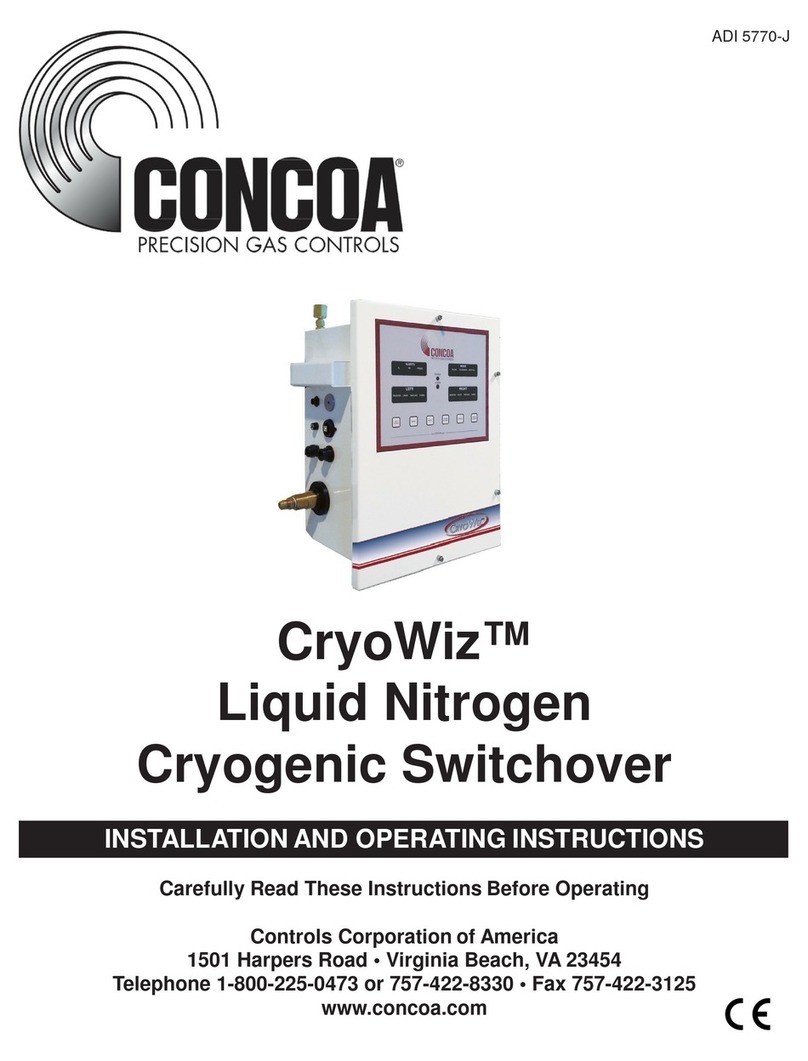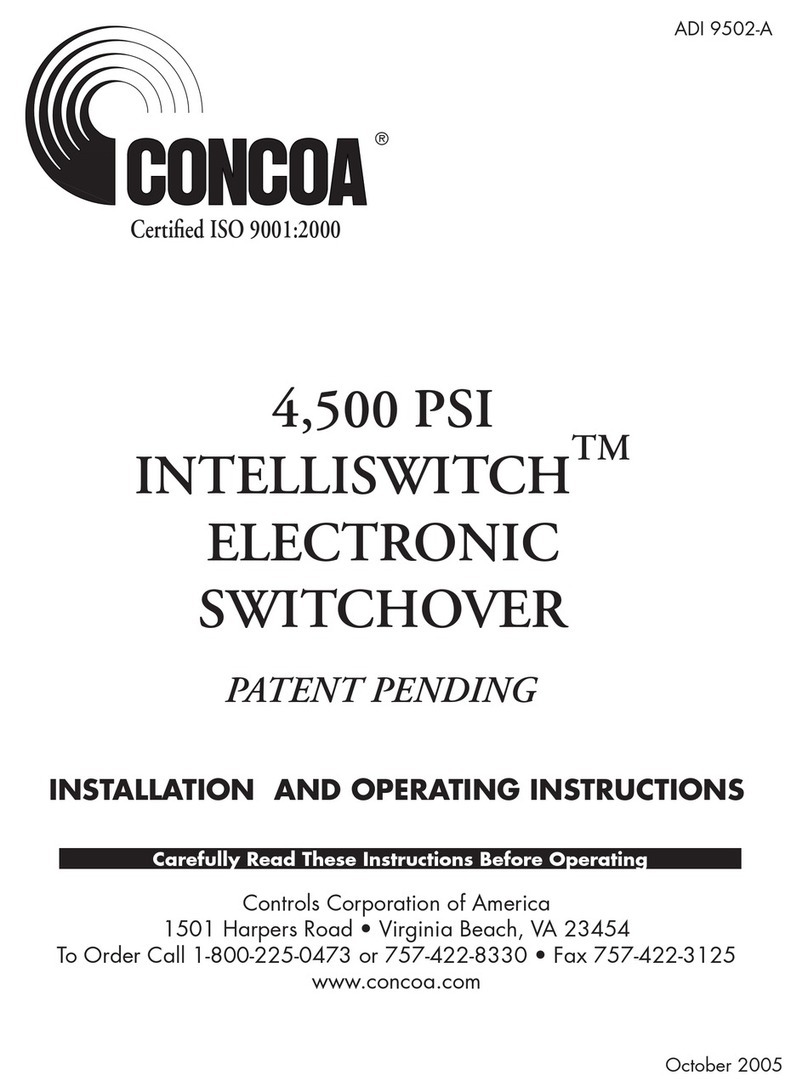
USER RESPONSIBILITY
The User of this equipment should follow all installation and operation instructions when using this
equipment. It is recommended that the user review all safety precautions listed in the safety section
of this manual.
This equipment must be checked periodically. Improperly working equipment should not be used.
Broken,worn, distorted, contaminated, or missing components should be replaced immediately.
CUSTOMER ASSISTANCE
In the event of equipment failure, call the CONCOA Customer Assistance Line: 1-800-225-0473.
Please be prepared to provide the model number and serial number of the equipment involved in
addition to some details regarding its application. This would include inlet and outlet pressures, flow
rate, environmental conditions, and gas service.
SAFETY
Carefully read and comply with these instructions before installing or operating any high pressure
gas manifold. These manifolds are designed, manufactured, and tested to conform to industry
standards for safety for high pressure gas manifolds for a maximum inlet pressure of 3500 PSI (241
bar) on the reserve (right) side. The primary (left) side is rated up to 600 PSI (41 bar).
Always observe the following safety practices:
√Store cylinders with valve caps screwed on and cylinders chained to a supporting wall or column.
√Handle cylinders carefully and only with valve caps screwed on. The cap will prevent the cylinder valve
from breaking off at the top of the cylinder if the cylinder is accidentally dropped or falls over. The cap
also protects the cylinder valve from damage to screw threads, which could cause leaky connections.
√Always open valves slowly when high-pressure gases are being used. Open valves all the way.
√Always be sure that a cylinder contains the correct gas before connecting it to any manifold.
√Always leak-test any manifold or distribution pipeline before using.
√Always be sure that the gas in a pipeline is the correct gas for the intended use.
√Always install a blind gland and nut or piping plug on any manifold inlet fitting if no cylinder is
connected to the fitting before opening any cylinder valve which is already connected to the manifold.
√Always close all cylinder valves before disconnecting cylinders from a manifold.
√Always remove all empty cylinders from a manifold before connecting full cylinders.
√Always test cylinders to be sure they are full before connecting to a manifold.
√NOTE: Use of PTFE lined pigtails for oxygen installations is not recommended unless they are equipped
with a Distance Volume Piece (DVP). Components in the manifold system can create a dead end
passage. The combination of a dead end passage coupled with a rapid pressurization may lead to
adiabatic compression of the contained oxygen and subsequent failure of the pigtail by ignition.
√All gas distribution piping systems must meet appropriate industrial standards for the intended service,
and they must be thoroughly cleaned before using.
√Keep all cylinders away from any source of high temperature (not over 120° F, 50° C) or possible fire
hazards. High-pressure gas contained in a closed cylinder becomes increasingly dangerous when
exposed to high temperature because pressure increases and the strength of the cylinder decreases.
√No smoking should be permitted near oxygen, nitrous oxide, flammable gases, flammable mixtures or
in areas where cylinders are stored.
√Where oxygen or nitrous oxide is used, the manifold and cylinders must be kept clean. No oil, grease, or
combustible substances should come in contact with oxygen or nitrous oxide storage or handling
equipment. Such materials in contact with oxygen or nitrous oxide are readily ignitable and, when
ignited, will burn intensely.
√Never lift gas cylinders with a magnetic lifting device.
√Never use an open flame when leak testing. -4-












